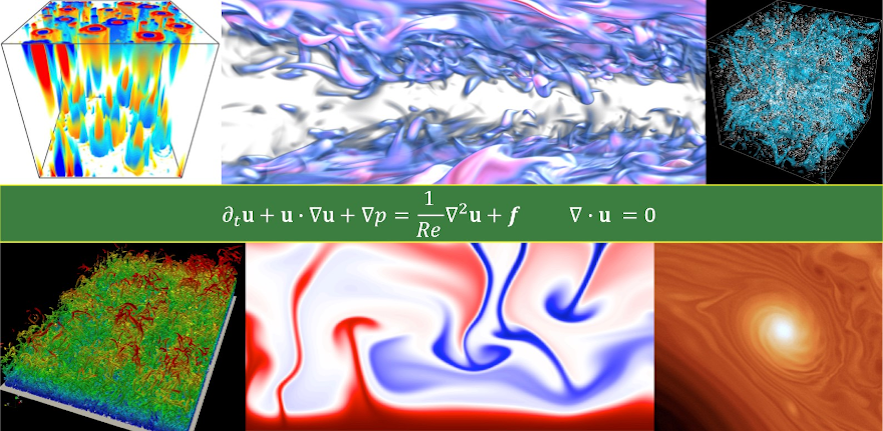A large-eddy pathway to turbulent drag reduction at high Reynolds numbers
Duration: 29 mins 46 secs
Share this media item:
Embed this media item:
Embed this media item:
About this item

| Description: |
Ivan Marusic (University of Melbourne)
29/03/2022 Programme: TURW04 SemId: 35335 |
|---|
| Created: | 2022-04-06 22:32 |
|---|---|
| Collection: | Mathematical aspects of turbulence: where do we stand? |
| Publisher: | Ivan Marusic |
| Copyright: | Isaac Newton Institute |
| Language: | eng (English) |
| Abstract: | Spanwise surface oscillation has been shown to be an effective drag reduction strategy for wall-bounded turbulent flows at low to modest Reynolds numbers (friction Reynolds numbers up to 1,000). Here, we present experimental measurements of substantial drag reduction at friction Reynolds numbers up to 12,800 using spanwise surface oscillations. The drag reduction was measured via a combination of drag balance and hot-wire anemometry. The drag reduction was found to occur via two distinct physical pathways. The first pathway, recognised from previous studies, involved actuating the surface at high frequencies, comparable to those of the small-scale eddies that dominate turbulence near the surface. The second pathway, however, was new and leveraged actuation at low frequencies comparable to those of the large-scale eddies farther from the surface. Importantly, this is accompanied with net-power savings due to the low actuation frequencies used. Insights into the underlying mechanism for the drag reduction will be discussed. |
|---|---|
Available Formats
| Format | Quality | Bitrate | Size | |||
|---|---|---|---|---|---|---|
| MPEG-4 Video | 1280x720 | 2.38 Mbits/sec | 532.79 MB | View | Download | |
| MPEG-4 Video | 640x360 | 872.55 kbits/sec | 190.23 MB | View | Download | |
| WebM | 1280x720 | 1.41 Mbits/sec | 316.69 MB | View | Download | |
| WebM | 640x360 | 494.13 kbits/sec | 107.79 MB | View | Download | |
| iPod Video | 480x270 | 478.15 kbits/sec | 104.25 MB | View | Download | |
| MP3 | 44100 Hz | 249.73 kbits/sec | 54.51 MB | Listen | Download | |
| Auto * | (Allows browser to choose a format it supports) | |||||

